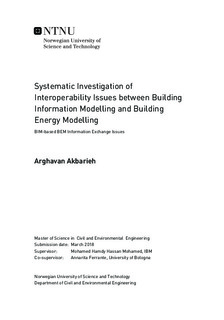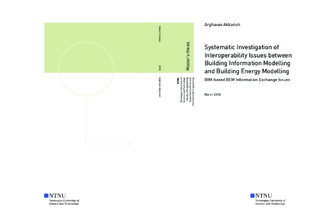| dc.description.abstract | Integrated building design necessitates the Architecture-Engineering-Construction-Owner-Operator (AECOO) Industry s participants to collaborate efficiently with each other through the different phases of a building. Nevertheless, to reduce the energy consumption and CO2 emissions of a building, the emphasis is on the early design phases, since if accurate energy calculations and strategies are developed in an early design stage, the sustainable footprint of the building will be significantly reduced.
That said, Building Information Modelling (BIM) promotes collaboration among the stakeholders by allowing them to design and store and access the data related to a project into one building information model. Furthermore, this model can be used for energy analysis through Building Energy Modelling (BEM) tools in the early design stages of the project, and through the whole life-cycle.
For this, BIM and BEM tools must be able to communicate and exchange information with one another, seamlessly. This means that these tools should be interoperable. However, currently, there are some issues in the BIM to BEM exchange process, which obliges the user to check for the interoperability issues and fix them manually. Therefore, as a result of these interoperability issues, the BIM to BEM process is not automated, and creating an accurate BIM-based BEM is quite time-consuming, laborious and prone to human-made errors.
Hence, this thesis aims to systematically investigate the interoperability issues and the state of automated data exchange between BIM and BEM tools, based on the Industry Foundation Class (IFC) exchange data schema. For this, Revit and IDA-ICE are used as BIM, and BEM tools, respectively.
The outcome is the presentation of a set of interoperability issues that were found based on the investigation of 19 case studies, with some suggestions for Revit and IDA-ICE developers and future researchers in the end. | |

